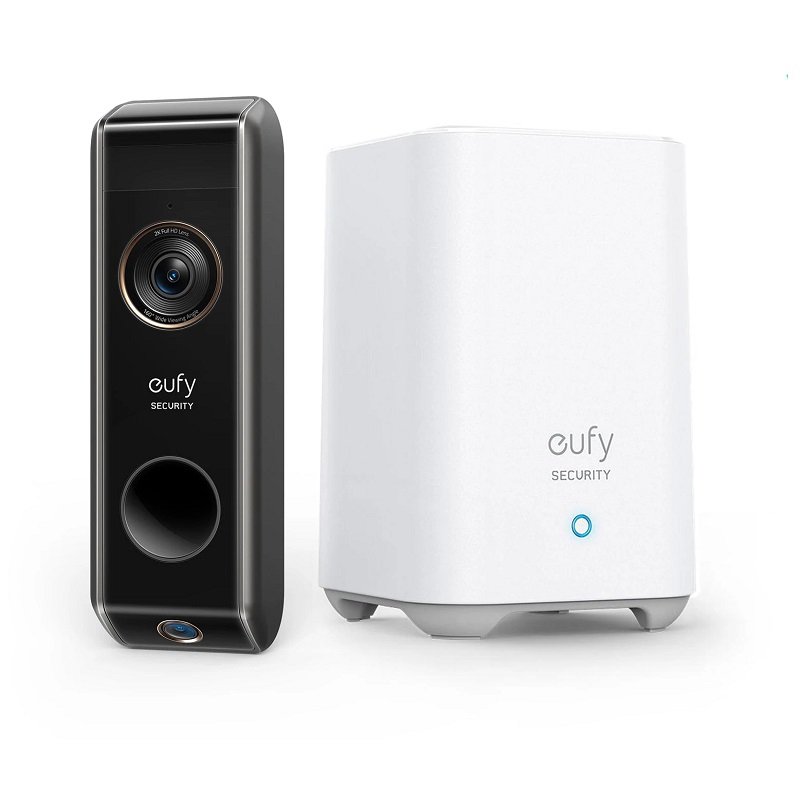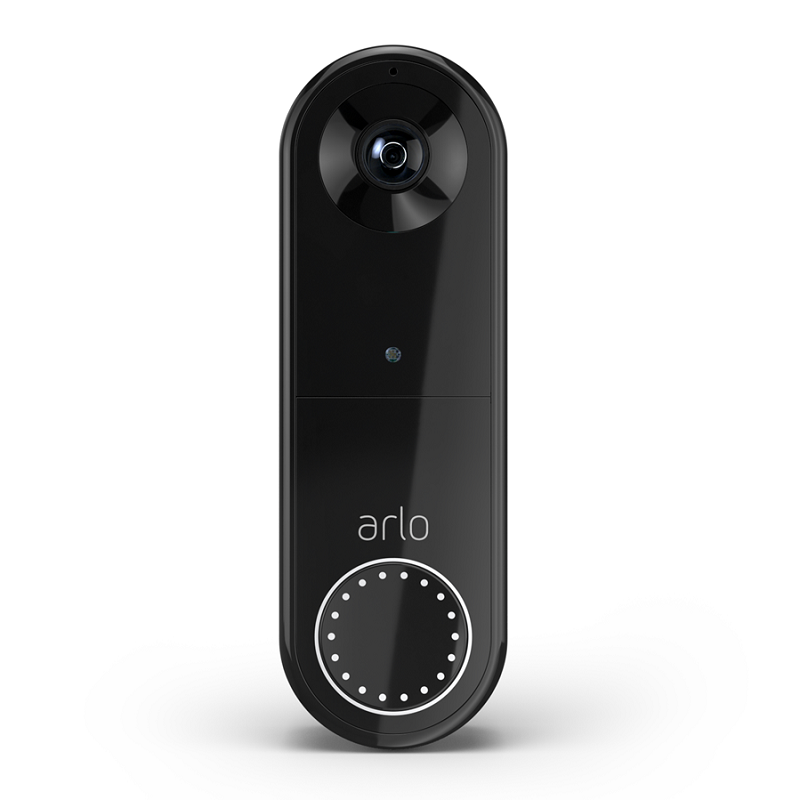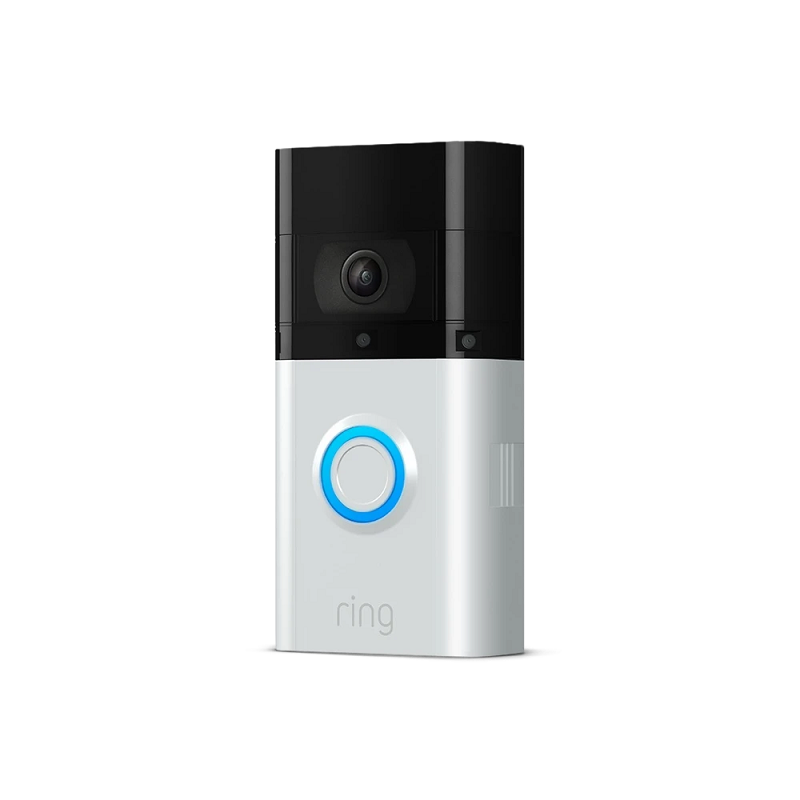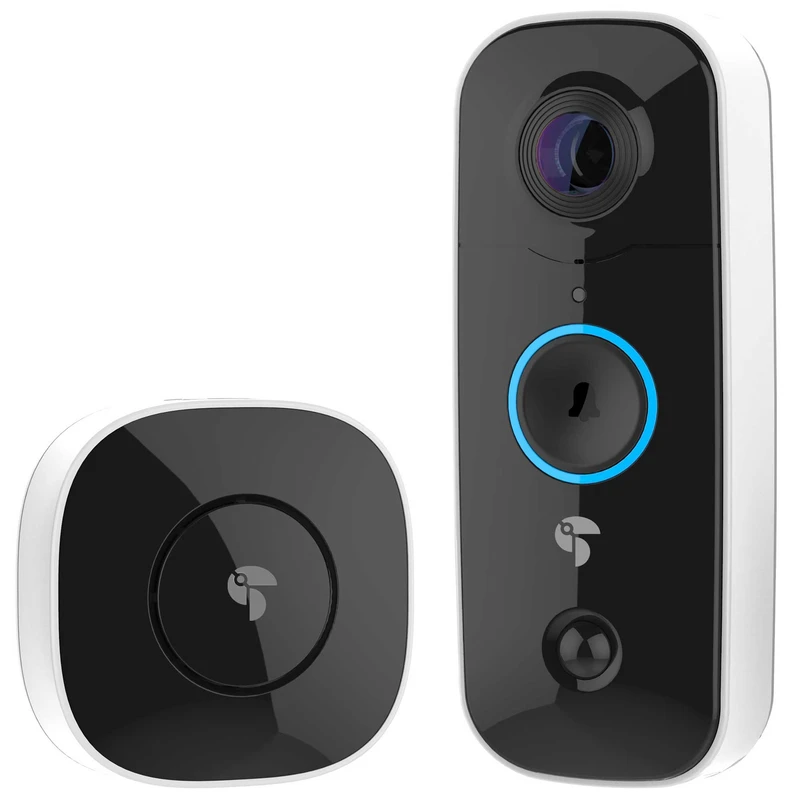Buying A Video Doorbell In Australia
When you buy through links in this article, I may earn an affiliate commission. Learn More.
With so many video doorbells hitting the market now there are more choices than ever to sort through. Upgrading your doorbell to a video model offers numerous benefits, but also comes with some privacy considerations. Most video doorbells are on the dodgy side, usually being re-badged mass-produced hardware using generic apps. Build quality and privacy are, shall we say, lacking.
Of the good ones, many of those smart doorbells are either region limited to countries outside of Australia, or simply don’t work well due to the brand failing to provide Australian based cloud infrastructure. This is critical for video access if you choose a cloud-based model, and for motion alert response times in any case.
There are a handful of great video doorbell products on offer that will deliver the goods for Australian homeowners, and I’ve taken care to assess each of these picks based on infrastructure, app performance, hardware features, and overall quality. My top picks for the best video doorbells are below but take a look at the reviews further down for the details on why, and some other options that might work for you.
Top Video Doorbells for Australia
Best Overall
Eufy Doorbell Dual
Best Camera
Best Performance
Local OR Cloud Storage
Best Smart Home
Arlo Essential
Great Camera
Good Smart Features
Most Supported Platforms
Best Cloud Plan
Ring Video Doorbell 4
Generous Cloud Storage
Advanced Smart Features
Replaceable Battery Pack
What To Look For In Australia
Responsiveness
To get the most value out of a video doorbell, you need to be able to rely on getting notifications very quickly on your smart phone. This allows you to not only be aware of someone at your door, but be able to take action about it. Whether that’s initiating a conversation via two-way audio or sounding an alarm, getting a late notification of activity is not really that useful.
This responsiveness is partly on the doorbell side as it’s governed by the performance of the hardware, motion sensors, video processing, and other factors. Equally important is the brand’s cloud infrastructure. All video doorbells will need to talk to the maker’s servers in order to pass that notification on to you, so if they haven’t invested in something local it’s going to be slower, sometimes much slower.
You’ll ideally want a big name, reputable brand that has the capability to have a local presence, not just a U.S. one, and my recommendations reflect that based on my own experience.
Weather Rating and Durability
It’s fair to say that Australian conditions can take a heavier toll on outdoor equipment than other countries. Indeed, Smart home maker Eve Systems specifically tests their outdoor gadgets to Australian UV standards to ensure better reliability.
Depending on your home’s orientation, it’s likely a video doorbell will have to tolerate full sun in the morning or afternoon. In summer this can be particularly brutal. You’ll want to ensure your video doorbell will be able to withstand the UV, and the heat. A good IP Rating will help, but you’ll need to check for any reports of overheating as well, as this isn’t covered by the rating system.
Viewing angle and resolution
Bigger is always better, right? Not necessarily when it comes to viewing angle. A wider-angle lens covers more area, sure, but it also means detail is lost as the number of pixels covering any particular feature is necessarily smaller.
The best video doorbell cameras have higher resolutions that can help with this, but you need to look at the actual numbers. The usage of the moniker ‘2K’ is highly misleading and becomes even more so when we move away from 16:9 aspect ratios, as some video doorbell cameras do.
The 1080p video doorbell cameras are a standard 1920x1080 16:9 resolution, but 2K doorbell cameras could be various different resolutions. I’ve noted those specifications in the reviews in this article for clarity.
Consider where you’re going to put the video doorbell camera, and what you actually need it to watch. If you only need to cover the front step, a narrower view is going to give better detail of what’s important but go wide angle if you want to watch the whole front yard.
Reviews In This Guide
Best Overall
Eufy Doorbell Dual
★★★★★
Key Features:
• ‘2K’ 2560x1920 HDR doorbell camera
• Secondary 1600x1200 package camera
• 6 month battery
• Local encrypted storage on base station
• Dual motion detection with radar
• Two-way audio
• Supports Alexa and Google Assistant
• IP65 Weather resistance
What I Like
I’ve chosen the Eufy Video Doorbell Dual as the best overall Wi-Fi video doorbell camera because it offers the best infrared night vision, has the most comprehensive set of advanced motion detection features and, like many of the best video doorbells, offers both wired and pure wireless doorbell options thanks to a battery powered version which gives it maximum flexibility. I find Eufy’s app to be thorough in its execution and offers a lot of control over the smart motion alert features and doorbell configuration, although this does make it a bit of a handful to navigate.
That feature set is derived from Eufy’s bigger focus on being a comprehensive smart home security system, so they offer a variety of other good quality security cameras and sensors that can tie into this as well. As this video doorbell comes with their Homebase 2 product to use for local storage, you’ll be set if you want to add any of those other products later.
Eufy has really innovated with this video doorbell by offering not only the best doorbell camera quality on the market but adding a second camera to give a view below the doorbell to keep a really good eye on those packages. It also doubles up the motion detection feature by not only using infra-red detection, but a radar sensor as well. Yes, really. The two sensors are used in conjunction to eliminate false positives. Eufy says this reduces bad notifications by up to 95% over the competition.
The included HomeBase 2 base station provides local video storage and also acts as a Wi-Fi repeater to guarantee you get good signal to the doorbell’s location. This keeps your videos safe from tampering, and the Homebase will also act as a doorbell chime if you want. There’s enough storage on board to save up to 6 months of video clips using the default 20 second clip length. You can also use Amazon Echo devices as doorbell chimes if you configure it to use Alexa. Google Assistant is also supported for basic functions, but not chimes.
Keep in mind the actual quality you get in a doorbell video clip will depend on your HomeBase connection, as lower signal will force it to downscale as with other wireless cameras. Eufy also has reasonably good support to back up their products compared to some other offerings, all of which adds up to a 90% user feedback rating.
Potential Concerns
Right now, the Eufy Video Doorbell Dual is pretty expensive in Australia. Thankfully you can opt for the much more affordable Eufy Video Doorbell 2K which gives you largely the same features but drops the second camera and radar. It’s not a bad trade-off considering the price difference.
Charging the battery requires the doorbell to be removed. The battery is built-in, so it has to be done on the doorbell itself, just like my OG Ring Video Doorbell before they updated the design to include removable battery packs. It’s not a deal breaker, but that also depends on how often you need to take it down to charge.
Video is saved to local storage on the included Homebase, which is good in that it keeps it away from casual theft, but Eufy has opted to only include 16GB of storage, and it can’t be updated. For just the doorbell that’s not so bad. If you’re like me you’re not concerned about keeping weeks of doorbell footage for posterity, just being able to see what you missed, and it’s plenty for that use case. If you start adding other cameras though it could become a constraint.

✔ Extra camera for package guard feature
✔ Radar and IR motion detection

✘ Must be removed to charge
✘ High price tag
Most Smart Home Integrations
Arlo Essential Doorbell
★★★★✩
Key Features:
• 1536x1536 HD camera
• 180 degree FoV
• Person and package detection
• Two-way audio and quick responses
• Wired power optional
• Supports Alexa, SmartThings, Google Assistant, IFTTT, HomeKit
• Weather resistance
What I Like
Arlo has a new entrant in this space for Australian customers, with the Arlo Essential Video Doorbell Wire-Free. Arlo is a maker of good quality products, and generally has products that are pretty competitive with Ring, their closest rival being they are both subscription-only services.
This Arlo video doorbell is a compelling alternative in that it has a 2K doorbell camera resolution, supports multiple motion detection types, including a package detection feature, and has the broadest smart home integration support in this list, a common differentiator for Arlo. In this case you can use it with Alexa, Google Assistant, Apple HomeKit, Samsung SmartThings, or IFTTT.
Note that HomeKit support requires an Arlo Base Station or SmartHub, and is limited to basic camera functions including live view, snapshots in the Home app, and basic motion and doorbell notifications. If you want HomeKit secure video recording, you’ll need to look elsewhere. Being able to see and talk to someone at the door may be sufficient for HomeKit and can be done without a subscription. If you do take up the subscription you can still record video in the Arlo cloud as well as using the HomeKit features.
The doorbell camera uses a 1:1 aspect ratio with a 180-degree field of view. This will give you great coverage not only of the outside area, but directly in front of the door as well. Arlo’s video quality is good, as is the night vision performance, although zooming will still get pretty fuzzy given it’s not super high resolution.
To finish off, you’ll get a removable battery pack with about 4 months of battery life, a wedge bracket for angling the doorbell better, and you have the option of using wired power if you have it available.
Potential Concerns
The biggest downside for me is Arlo’s cloud performance in Australia. It’s not bad, but it’s definitely slower to respond by a few seconds to both video streaming and notifications than I get from Ring. The Arlo app is also not nearly as nicely laid out as Ring’s, and it can be a bit cryptic trying to find certain settings.
The subscription plans are very similar, but I rank the Ring Protect plan a little higher given they offer some nice inclusions such as a theft replacement guarantee and a lifetime warranty upgrade on the higher plan level.
Finally, although the battery pack is removable, like Ring’s, you need to remove the video doorbell from the wall to do it, unlike Ring’s which is easily accessed from the front.

✔ Best smart home integration options
✔ Good Camera

✘ Must be removed to charge
✘ Slower notification performance
Best Cloud-Based Option
Ring Video Doorbell 4
★★★★✩
Key Features:
• 1920x1080 HDR camera
• 160-degree FoV
• Person detection and motion zones
• 4 second pre-roll and snapshots
• Two-way audio
• Removable battery pack
• Wired power optional
• Supports Alexa
• Dual band Wi-Fi
What I Like
Ring was a pioneer in the smart doorbell camera market and currently has a selection of models under their ‘Ring Video Doorbell’ range for different use cases. The latest wireless model is the Ring Video Doorbell 4. This now includes a 4 second pre-roll on videos so you can see what happened before the bell was pressed, and ensure you capture the whole event.
This is very handy feature as a common complaint with wireless video doorbells is you only capture things a few seconds after. That varies a lot based on many factors, but this feature helps to mitigate it. Ring also has an excellent local cloud presence in Australia, which is an important consideration.
Ring has upped their game recently with new Ring app features which have considerably improved the user experience, which in my experience still makes Ring one of the best video doorbell cameras on the market. These app enhancements include things like advanced motion detection, person detection, and adjustable motion zones on their battery powered models, like this one, and timeline snapshots which record stills periodically to fill in the blanks between motion events.
The app offers an easy-to-use interface for accessing the video, and I quite like how the timeline functions now, as you’re able to watch through long periods seamlessly flowing from snapshots to video clips as you go.
This Ring Video Doorbell is the only model here that doesn’t need to be removed to charge, and you can buy spare battery packs for quick change outs right from the front panel. That panel (the bottom aluminium part) is also interchangeable for optional ones in a variety of colors and finishes to better suit your home. You should get about 4 months of battery life from one of the packs.
The plus model also includes a corner kit for free, which allows you to mount it facing the front door a little better and avoid some background movement in the process. You also have the option to use the Ring Video Doorbell wired to a doorbell transformer and not have to worry about batteries.
Ring includes lifetime theft replacement with all their models which is a nice bonus, and their Ring Protect plan is one of the best video doorbell subscriptions on offer. You get 60-day video storage which is longer than most, all their smart features, and rich notifications. That means you get a snapshot of the event trigger on your phone and smart watch which makes it much quicker to check what’s happening and decide if you need to go further.
Potential Concerns
Even though it’s one of the more expensive options, the video doorbell camera is still only 1080p on their latest model. For a video doorbell I don’t find it to be a deal breaker, but it is starting to look lacking compared to the higher resolutions on cheaper models now. Even with Ring Video Doorbell wired to power you’ll still need to get a Ring chime separately if you want to have it chime other than your phone.
Ring Video Doorbells and Ring security cameras only record to the cloud. While you can use the Ring Video Doorbell 4 without a subscription, you’ll only get live view and basic notifications, so you really need it to get your money’s worth.
Ring has also been mired in some bad press around privacy controls over the last few years. The security design of their apps and software has generally been good, but the issues have revolved around their internal policies more than anything. They’ve made considerable moves to correct that, but it’s worth being aware of.
For my money, I’m happy to use them where privacy is less of an issue, and the front door is one of those cases. Their cloud response is very good in my experience, and their improvements to the app experience have gone a long way to assuage my concerns by giving us more control of what and when things get recorded.

✔ Easily removable battery pack
✔ Good notification and recording performance

✘ Lower camera resolution
✘ Only supports Alexa
Best Value
Google Nest Doorbell
★★★★✩
Key Features:
• 720x1280 HD camera
• 145-degree FoV
• Object detection and motion zones
• Two-way audio
• Wired power optional
• Supports Google Assistant and Alexa
• IP54 Weather resistance
• Free Cloud Storage (3 hours)
What I Like
The Google Nest Doorbell offers a viable no-subscription option for wireless, cloud-based doorbells. While Google does have a subscription plan that provides up to 60 days of video storage and their ‘Nest Aware’ facial recognition system, you can operate the Nest Doorbell just fine without it. This is because you get 3 hours of storage for free, and the usual smart alert features will still work.
Smart alerts are essential for any viable video doorbell or camera system and is a big part of the ‘smart’ in these products. Without them, or decent implementations of them, you’ll get notified about everything that moves in front of the camera. That’s useless and only leads to you ignoring the notifications. Arlo and Ring offer these features as part of their subscription plan, but Nest has them by default where you can filter people or packages alerts to keep away those porch pirates.
The camera here is also different to the others in this list. While a couple of contenders have a square aspect ratio that assists with seeing more around the door, the Nest Doorbell uses a 3:4 vertical aspect ratio to give a clearer view of the doorstep. Useful for a doorbell providing you don’t want it to cover a wider angle out the front as well.
The design itself is quite sleek, with a very low profile for a battery powered model. You can also wire this into standard 24V doorbell wires, and it can ring an existing wired doorbell chime if you have one. Other wired video doorbells, surprisingly, often won’t do that. If you don’t have a wired chime, or just want to go wire-free, you can have it ring on a Googe Nest smart speaker or just on your phone.
Potential Concerns
While a good video doorbell, the camera resolution is actually the lowest in this list and is very much focused on what is in front of the door. For that purpose, it’s perfectly adequate, but if you’d like to use it to keep an eye on the front yard as well it’s not going to do a good job. The night vision is similarly constrained. It’s pretty good out to a few meters, but that’s it. Arlo and Eufy will give you a lot more visibility.
The Nest Doorbell battery is built into the device and is not removable. That means you’ll need to take it off the wall to charge it periodically like most other models. Thankfully, this isn’t too big a deal so long as you don’t lose the removal tool needed to unclip it from the mounting bracket.
You might also be wary of sending video to Google to look after. That’s fair given their reputation for harvesting our data, but in their defense, Google has been very open and conservative when it comes to data collection from smart home devices like this, and their speakers and Wi-Fi routers. If that’s still a concern, then I’d be looking at a Eufy Doorbell instead.

✔ Vertical aspect ratio for better view
✔ Limited free cloud storage

✘ Smart features require subscription
✘ Must remove to charge
Best Budget Model
TMEZON WiFi Doorbell Camera
★★★★✩
Key Features:
• 1920x1080 HD camera
• 145-degree FoV
• Tamper alarm
• Local Micro SD storage option
• Indoor chime included
• Two-way audio w/quick responses
• IP65 Weather resistance
What I Like
If you’re looking for a more affordable video doorbell, it’s easy to fall for one of the many (many!) mass market Chinese offerings. A lot of these are actually the exact same hardware sold under dozens of brand names, and they’re all a bit suspect in terms of longevity and privacy considerations, even if you don’t use their cloud offerings.
Still, if you’re on a budget, a Chinese model is going to be where it’s at, and the TMEZON 1080P WiFi Doorbell Camera offers something with a bit more credibility than the rest.
While not the best video doorbell camera it is considerably better than the cheaper alternatives, being from a company with an actual website, and providing a decent field of view, a tamper alarm, a solid IP65 weather resistance rating. You also get a wireless indoor chime thrown in, but this is purely a doorbell chime and doesn’t provide any video storage of Wi-Fi repeater functions like some other models.
Video can be stored in their cloud service if you choose to pay a modest subscription, but you really want to keep those videos where you know who’s got access to them, on the internal MicroSD card. This supports up to 128GB, but they don’t include one in the box, so you’ll want to add that to the purchase. A good Sandisk 64GB card will only set you back a few bucks.
Potential Concerns
There’s not much in the way of motion detection options or smart notification features here, and the night vision is not the best. It’s just a doorbell offering with two-way talk and basic motion detection notifications. Placement will be an important consideration to avoid notification spam, and unfortunately there is no wedge mount available for this model.
Battery life, as is often the case, is a common complaint. The specs only suggest a 3-month battery life, and given the propensity for device makers to overstate these things that tells you a lot. Real world usage is more in the 1–2-month range, depending on motion activity and climate with colder weather cutting that down a bit.
Privacy is always a consideration, and especially with products like these. I personally wouldn’t be going with a Chinese cloud-storage service from a lesser-known brand. Thankfully you have the local storage option, which is a big help, and I’d recommend going that way.

✔ Indoor chime included
✔ Local storage on SD card

✘ Poor battery life
✘ SD card not included
Alternative Video Doorbell for Australia
Toucan Wireless Doorbell
★★★★✩
Key Features:
• 1440x1440 HD camera
• 180 degree FoV
• 24 hour cloud storage
• Indoor chime included
• Two-way audio and quick responses
• Supports Alexa
• IP65 Weather resistance
What I Like
The Toucan Wireless Video Doorbell offers a solid choice for wide area coverage. The doorbell camera resolution is good, although less than 2K, with a square aspect ratio. Coupled with the 180-degree field of view vertically and horizontally you get very good coverage of everything in front of the house. This is especially useful for seeing where packages have been left.
The usual issue of extreme fisheye effect and subsequent poor visibility are mitigated by Toucan’s zoom and scroll features in the app. You’re able to more easily focus on parts of the image to see what’s going on with some degree of optical correction, and there’s a built-in alarm you can trigger from the app.
Two-way talk is available, or you can opt to use pre-recorded responses for quick messages. The included indoor chime is wireless, which means you don’t need to plug it in to power. Instead, it runs on two AA batteries, which is a departure from most similar accessories. This allows it to be placed anywhere you need it and not take up another power point.
Video clips are stored in Toucan’s cloud service for up to 24 hours. That’s a bit short compared to most cloud offerings considering it’s not free but should be sufficient for doorbell use cases. You can a 30-day trial on that service, but it really is necessary in order to use the device after that. With the cloud storage enabled, clips can be saved and downloaded to your phone for longer term storage.
Things to watch out for
If you’re strongly averse to subscriptions, this one won’t be for you. Not only do you need to pay for the cloud storage, but they have a higher tier subscription to unlock certain features like the Alexa integration and multi-user access. Just to make sure you don’t get around that limitation, the app only allows one login at a time from the same account. The servers are based in the US and Europe, so you you’ll see some delay in response times and notifications.
There aren’t a lot of smart features. You can adjust the motion detection sensitivity, but the this can be a bit hit and miss, it’s either too much or not enough. There’s also no motion zones settings or person detection features. So long as you’re not placing it where you’ll get a lot of background motion this won’t be a big problem. If you’re facing a busy street it’s probably going to be a source of frustration as there’s no way to filter out unnecessary motion events.
Finally, don’t count on a lot of support. Being US focused, they tend to want to send someone out to help with issues. That’s not going to work in Australia, and their remote support hasn’t been well received based on the customer feedback I’ve been seeing.

✔ Free cloud storage
✔ Indoor chime included

✘ Must be removed to charge
✘ Limited control over notifications
Considerations Before Buying
How about battery life?
If you’re not going for a wired video doorbell you’ll be looking at battery operated video doorbell models. These batteries will always be a rechargeable lithium-ion type of some kind and will need to be recharged periodically. Battery life is one of the most common complaints I see when looking at these types of devices, both video doorbells and security cameras.
In some cases, it’s clear that there is a defective battery, these usually occur in batteries and that can result in a raft of complaints for a product over a certain period. Usually, the companies involved have done the right thing and replaced these units once that is confirmed, so fair enough, stuff happens. Sometimes it can be down to other factors though, which can range from extreme weather (Li-ion batteries don’t like hot or cold), to how much traffic the camera sees.
Your mileage will vary, as they say, so it’s hard to be definitive about what life you’ll get with any particular product regardless of what the manufacturer claims. Generally, with the best doorbell cameras you should see at least a couple of months with a decent brand device and typical settings.
Where are the videos stored?
Cloud video storage gives you some obvious convenience benefits and provides protection in the event an intruder is savvy enough to steal the doorbell camera that is recording them. These usually require a subscription in order to cover the cost of providing that storage and the servers to access it.
Third party cloud services are also prone to questionable security and privacy practices, and this is a much greater risk with lesser-known brands that don’t get the scrutiny of security experts and the tech media.
The alternative is generally to have a locally installed memory card in the smart doorbell camera itself, and many subscription-free options do it this way. Some provide an additional base station that takes care of the storage and keeps those videos safely inside the house.
Not being exposed to direct theft from the outside, and in a less obvious location where an intruder isn’t likely to find them, comes close to the same thing as cloud storage and makes for better home security anyway.
Advanced features
Most doorbell cameras will include some level of smart features, but cheaper models are still lacking in this area a lot of the time. A truly smart video doorbell needs to include things like person detection, adjustable motion zones, quick responses, and sensitivity controls.
These features help to ensure you only get notifications that you care about, and you can respond in a realistic time frame. Tons of useless notifications just mean you’ll start ignoring them, or even turn them off, which defeats the purpose of having a video doorbell. The more of these features, the better off you’ll be in the long term.
You’ll also want to consider robust multi-user support if you’ll be sharing the video doorbell with other people. You need to ensure those people can be removed easily and reliably in the event relationships change, and it’s never a good idea to share account passwords anyway.
Smart Home Integration
If you have a smart home, you might want to get a video doorbell that integrates with it. However, the benefits of this can be quite limited. Usually, you’ll only be able to answer the doorbell using a smart display, have your smart speakers act as doorbell chimes, and possibly be able to use the doorbell as a motion sensor to trigger automation rules.
These things are fairly common for smart doorbells that have Amazon Alexa support, but Google Assistant is so limited many smart doorbells don’t even bother.
If you don’t have a smart display, that’s one benefit gone already, and the others may not be very compelling considering you’ll need the makers app installed on your phone regardless. It’s probably worth going with a better video doorbell than compromising for one with the smart home integration you’re looking for.
My Recommendations
The selection of smart video doorbells in Australia is notably less than some of the bigger markets, but there are some good options to suit different price points and user preferences. The best video doorbells offer not only good cameras, but a comprehensive suite of smart features to make your user experience a good one rather than a waste of time.
I’ve been consistently impressed with Eufy’s offerings of late, and their Eufy Doorbell Dual is an example of that. Offering the best doorbell camera in its class, comprehensive smart features and local storage it’s hard to go past. It will also set you up to add some of their other quality security cameras if you want to enhance your home security later.
If you want something without a hub, the Ring Video Doorbell 4 offers a good set of smart features, a generous cloud service plan, and easier battery charging than the rest. For a small upgrade on the cloud plan, you’re able to add unlimited Ring devices, so it’s also a great option if you're considering building your home security camera footprint.
Finally, for those on a budget, I’d recommend the TMEZON 1080P WiFi Doorbell Camera. It’s a bit basic on the features, but offers a good doorbell camera, wide field of view, and both cloud and local Micro SD storage options.
Common Questions
Do I need a subscription for a video doorbell?
While most video doorbells offer a subscription, there are plenty of video doorbells that don’t need one, but you are often compromising on features when you opt to go without. That’s not always the case, though, and my overall best video doorbell pick doesn’t require one, but instead offers it as an add-on for those who might want cloud storage as well.
Can you use Ring Video Doorbell without a subscription?
You can use a Ring Video Doorbell without a subscription, but you’ll have a very limited experience. You’ll receive basic notifications when motion is detected, or the Ring doorbell button is pressed, and you’ll be able to view live video streaming from the camera and talk to whoever is there.
You won’t get any recorded ring videos, though, so if you miss the event you won’t be able to check up on what happened. You’ll also lose virtually all the smart notification features that the Ring doorbells provide which allow you to tailor what you get push notifications about and get only the alerts you care about.
What is the best video doorbell without a subscription?
Ultimately, for the best video doorbell in Australia without a subscription I settled on the Eufy Doorbell Dual based on features, utility, performance, and customer feedback as the best overall. Eufy is a solid company with a good reputation, decent support, and quality products. The 2K video doorbell offers a good mix of installation options, secure local storage and extensive smart motion features and notifications.
Do video doorbells need Wi-Fi?
Yes, a smart video doorbell will need Wi-Fi to communicate with your home network and the internet in order to send you notifications, and to record footage and access that video later. It will also be needed to process smart notifications and similar video processing features in many cases.
Wi-Fi smart doorbell devices can be powered by doorbell wiring but, even then, they may use the Wi-Fi to ring any linked doorbell chimes and still rely on it for their other functions like sending notifications and performing firmware updates.
Those models that can use some sort of local base station can often record without the internet, but even those will need Wi-Fi for you to access the base station, and brands like Ring need the internet for everything.










